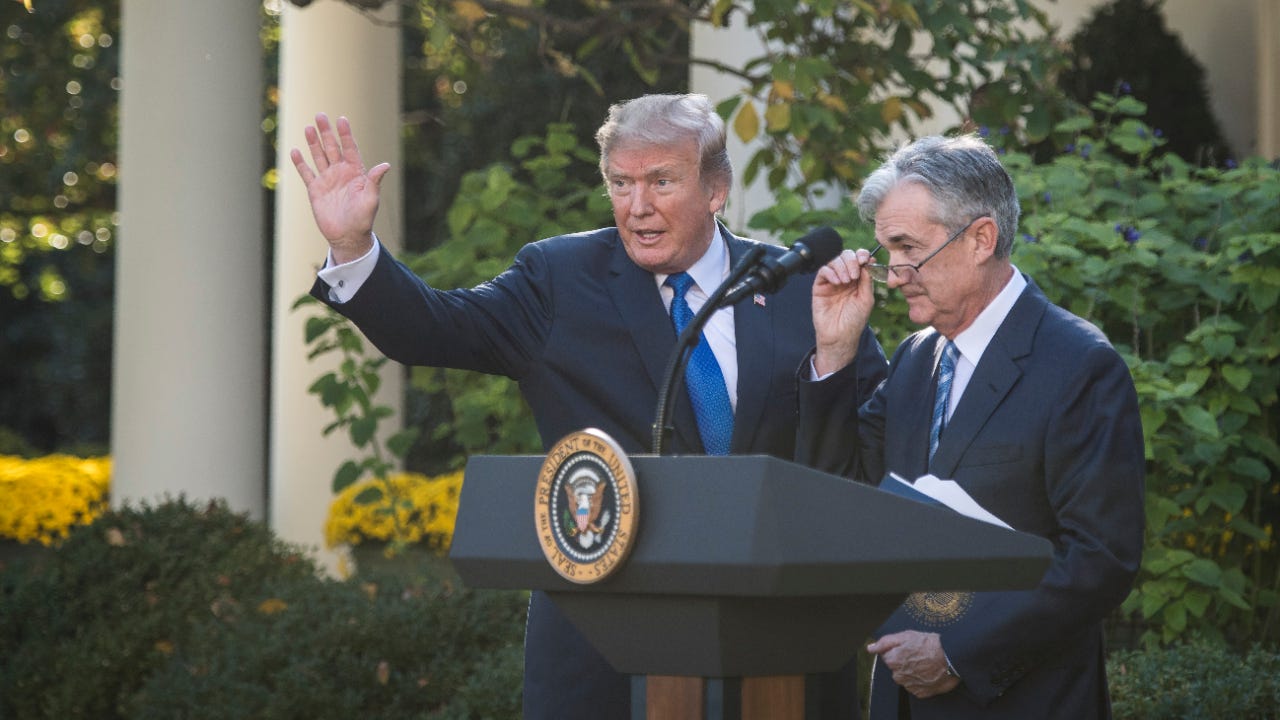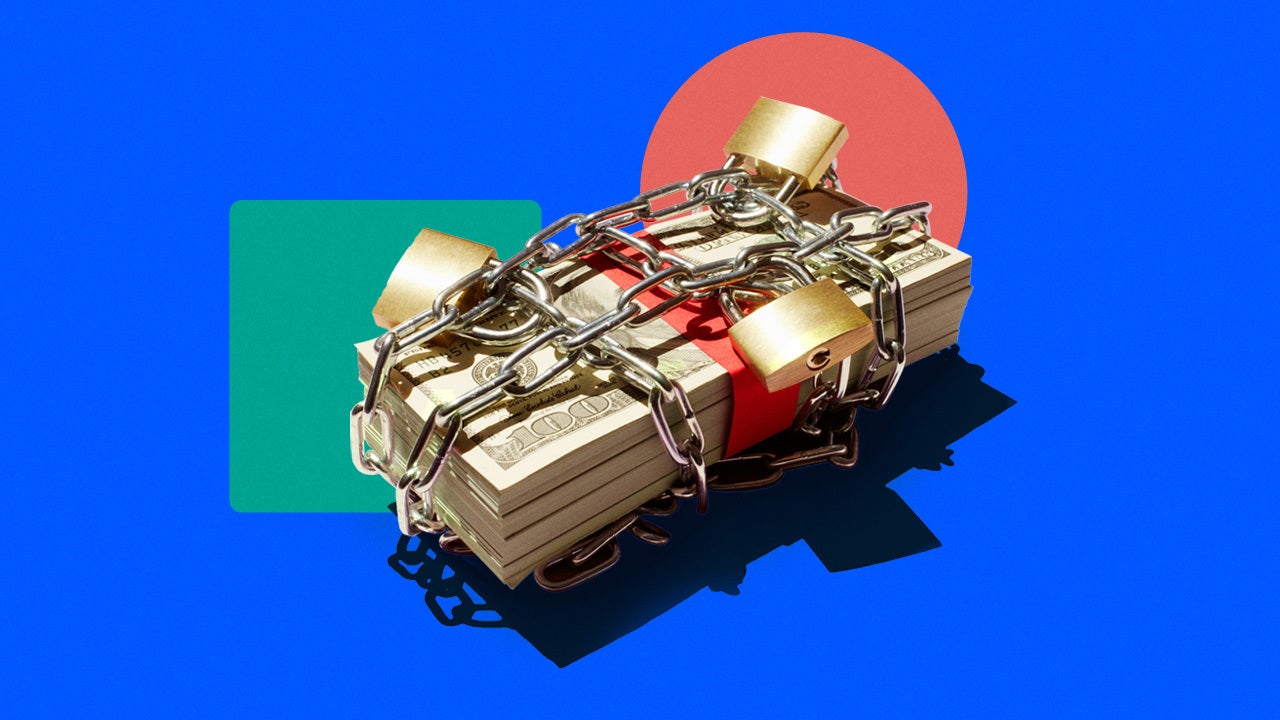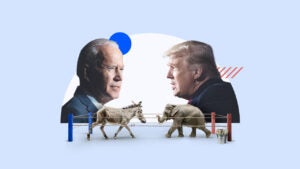Here’s what a Trump or Biden presidency would mean for banking

President Donald Trump has spent much of his time in office rolling back Obama-era banking regulations that cracked down on firms in the years since the financial crisis, policies that the industry has long regarded as costly and overly burdensome.
Former Vice President Joe Biden wants to undo most of that, backstopping consumers’ finances and holding depository institutions accountable to prevent the same financial calamity.
Either way you look at it, there’s going to be some whiplash — possibly weighing on consumers’ wallets.
“Certainly whenever you have swings in regulation, it’s going to become more expensive,” says Ryan Donovan, chief advocacy officer at the Credit Union National Association (CUNA). “There is certainly a fork in the road with this election, and one of the reasons that we’re concerned is, anytime there’s a change in administration — whether you’re going from Republican to Democrat or Democrat to Republican — a regulated entity will have to change their processes.”
Trump’s likely banking agenda: Stick to the status quo
Nearly two months away from the 2020 presidential elections, the vote is still uncertain. Recent polls suggest Trump is trailing Biden, including in key battleground states, but the incumbent has gained ground in recent days. However, the surprise results of 2016’s elections are fresh on the industry’s mind, meaning no result may be worth ruling out, even at this point.
Deregulation has been part of Trump’s trademark. During his first few days in office, Trump signed an executive order in January 2017 requiring that regulators revoke two rules for every new guideline they put on the books. As time would tell, institutions in many cases weren’t required to follow those guidelines, but it became a major Trump administration talking point.
“When President Trump first came into office, he made it very clear that he wanted a deregulatory agenda,” says Carrie Hunt, executive vice president of government affairs and general counsel for the National Association of Federally-Insured Credit Unions.
But few industries have become more familiar with that loose-regulatory stance than banking. The president signed the biggest banking regulation overhaul since the global financial crisis in May 2018, easing rules for all financial firms except the country’s biggest. Under that measure, which had bipartisan support in Congress, lawmakers raised the asset threshold used to deem certain financial firms “too big to fail” from $50 billion to $250 billion. Those new rules let small- and medium-sized banks off the hook from having to go through “stress tests” — scenarios that test an institution’s soundness in a hypothetical financial crisis — and drafting what’s called a “living will.”
Regulators in June also eased up on a mandate commonly called the “Volcker Rule,” allowing banks with less than $10 billion in assets to resume proprietary trading, invest in venture capital and work with the hedge funds and private equity firms they were once blocked off from.
While the moves were cheered by industry leaders and banks, many consumer advocates feared that rolling them back would open the door to more risky investments that sparked the Great Recession of 2007-2009. Before she was Speaker of the House, Rep. Nancy Pelosi called Trump’s Dodd-Frank rewrites a “bad bill under the guise of helping community banks.”
Also on the drawing board are updates to the Community Reinvestment Act (CRA), a law passed in 1977 that prevents banks from discriminating against low- and moderate-income communities. The Trump administration in January 2020 proposed broadening the definition of what constitutes as a bank and expanding the types of qualifying loans that could count toward improving CRA ratings, such as lending to low-income customers through credit cards and personal loans. The reform also proposed letting loans toward building stadiums or hospitals count as community development.
“If the president is re-elected, we would expect a continuation of the policies that he and his administration have tried to implement over the last four years,” Donovan says. “The Biden administration would take a very sharp eye to the changes that have been made over the last four years.”
Biden’s likely banking agenda: Out with the new, in with the old
Biden has been campaigning on a promise to reinstate most of those Dodd-Frank-era financial reforms, which are policies he himself championed as part of the Obama administration.
Though not providing specifics on which rolled-back rules he would restore, Biden said he wants to “strengthen and protect” Dodd-Frank Act provisions to help ensure that Americans’ finances aren’t harmed during a financial crisis brought on by negligent lending or investing, according to a laundry list of recommendations formed through a “unity taskforce” with Sen. Bernie Sanders of Vermont.
Biden is also proposing strengthening oversight of consumer lending through credit cards and regulating “usurious” interest rates that may be higher for certain regions of the country and borrower demographics, according to the proposals. The Democratic nominee also wants to utilize the Consumer Financial Protection Bureau (CFPB) to crack down on abusive or deceptive lending practices and make borrowing costs transparent by zip code.
Biden is also looking to update the CRA, specifically so it applies to mortgage and insurance companies. But rather than relaxing other lending rules, Biden wants to mandate that financial services firms outline their public interest commitments while also ramping down on loopholes that prevent firms from investing in community development.
The Democratic nominee is also throwing out more progressive banking proposals, including creating a public credit reporting agency and a banking service through the U.S. Postal Service to help the unbanked and underbanked. His plans also include creating a real-time payments system through the Federal Reserve and revamping the U.S. central bank to be able to offer bank accounts to consumers.
While analysts point out the need for protecting consumers and perfecting a real-time payments system, many raise concerns that those progressive changes could ensue unseen operational challenges. Meanwhile, experts also raise questions about the practicality of postal banking, with the USPS struggling financially for years.
“The financial sector would be a good deal safer, and borrowers would be much better protected. But when banks are tightly regulated, nonbanks step in,” says Karen Petrou, co-founder and managing partner of Federal Financial Analytics. “If you get the Fed in the business of taking deposits, you better figure out who’s going to make loans. Banks won’t be doing it anymore.”
What this means for depositors: Any change comes with a cost
The obvious caveat — and adding to what’s whipsawing banks — is the added cost of implementing regulatory changes. That’s the case even with administrations like the Trump White House, who have rolled back rules.
“They have to retain their staff, print new forms, change software and disclosures,” Donovan says. “Most of this is part of a core system that is sort of the backbone of the financial institution. Even when you make a change that’s intended to provide less regulatory burden, there are some upfront costs to implementing that.”
Donovan cites four years of CUNA research tracking the financial impact of regulations. Those reports have found that regulatory costs have gone up, even in the Trump administration’s years. In 2019, those costs reached about $7 billion, up from $6.1 billion in 2017 and $5.3 billion in 2015. Those rising costs have also outpaced inflation, according to Mike Schenk, chief economist and deputy chief advocacy officer for policy analysis at CUNA.
For depositors, that means financial firms might be forced to hike fees and loan costs. Fewer firms might also be unable to introduce new products and services, and less money might be allocated toward updating technology.
“Sometimes it isn’t even that there is disagreement as to what a regulation is or what a regulation isn’t, but just the fact you have to change the regulation,” Hunt says. “You have to educate your staff and educate your membership and go through all these operational changes. That can be quite difficult, and a lot of resources could come into play if we see some massive policy changes down the road.”
Petrou points out how the harsher the regulatory environment, the more likely a less-regulated “nonbank” financial institution is to step in. Those firms “don’t have the scope for as much consumer protection and safety and soundness rules,” but it depends on “who does what to whom,” she says. If an administration adjusts regulations to be uniform for both banks and nonbanks, it might not be as much of an issue.
Donovan said credit unions saw that caveat in action in the early 2010s, when the CFPB ruled that international money transfers should be limited to 100 a year. Credit unions were cautious about staying under the compliance threshold, and many consumers turned to nonbank transfer companies such as MoneyGram and Western Union. “The rule had a perverse impact in that it sent consumers directly into the arms of those that were abusing them,” Donovan says.
The CFPB amended that rule in July to 500 remittances, largely on lobbying from Donovan’s trade group, according to a statement.
Regulatory agencies, officials could also take the spotlight
But that highlights another key power player in the realm of banking, largely set by whoever occupies the White House. A president has the power to appoint the Treasury Secretary, Fed Chair and all members of the Fed’s board of governors. Though the U.S. central bank doesn’t directly answer to Trump and keeps politics out of its discussions, whomever a president appoints could drastically change the way regulations are discussed and voted on.
That came into view in March, when the Fed made a key change to the way banks’ capital requirements are set, spearheaded by Fed Governor Randal Quarles, the Fed’s vice chair for supervision and regulation who Trump nominated in 2017. The board’s sole remaining Obama-appointed governor — Lael Brainard — was the only voting official who opposed the rollback.
Whoever occupies the White House would also be in direct control over who heads agencies, including the CFPB, as well as the National Credit Union Association (NCUA), the Office of the Comptroller of the Currency (OCC) and the Federal Deposit Insurance Corporation (FDIC). For the Trump administration, that would be CFPB Director Kathy Kraninger, Acting Comptroller Brian Brooks and FDIC Chair Jelena McWilliams.
The biggest changes might be felt among single-director entities such as the CFPB, but less so among agencies with multi-member boards, including the FDIC.
“When you have just one person making the decision and you change that person and you change that direction, you are going to have a much wilder swing,” Donovan says. “The multiple voices of the table would narrow the swing of the pendulum.”
But in the CFPB’s case, a change in directors has been more about “a change in tone,” Hunt says. The CFPB regulates “really standing in the shoes of the consumer, so that consumers have access to financial products and services. I don’t see that changing.”
Why any new changes might be tricky right now
Even so, financial services reform is unlikely to be a “day one priority,” Petrou says. And what the next administration brings to the table is unpredictable, greatly dependent on the broader economic environment and how both chambers of Congress swing.
Some of Biden’s more progressive policies are unlikely to make it through Congress without a so-called “blue wave” changing the balance of power in the legislature.
“The reality is going to write the rules,” Petrou says. “These kinds of issues will only happen if the United States is not in a crisis and I don’t think anybody can predict that yet. These kinds of things can suck the oxygen very fast out of what people are talking about now: rolling back the rules or imposing the tough new bank capital requirements.”
Amid a wave of fiscal stimulus, depository institutions are swimming in money as consumers decide to allocate their stimulus checks and extended unemployment benefits toward their savings. That’s lodged banks and credit unions between a rock and a hard place, with consumers largely hesitant about making big-ticket purchases and banks unable to quickly lend out that money.
“As these deposits flow in, the assets that they are put to work in are not loans — they tend to be investments,” Schenk says. “Those institutions will be nuzzling with low-interest margins for a long time into the future. That will put tremendous pressure on bottom-line results and operationally will challenge many institutions no matter who’s in the White House.”
But to some industry groups, it’s this broader economic environment that makes more oversight over financial services a necessity.
“Given the economic consequences of the pandemic, consumers are in great need of further protections, not fewer in the financial marketplace,” says Rachel Gittleman, financial services subject matter expert and membership outreach manager for the Consumer Federation of America. “With record high unemployment rates, consumers are facing unprecedented challenges.”






